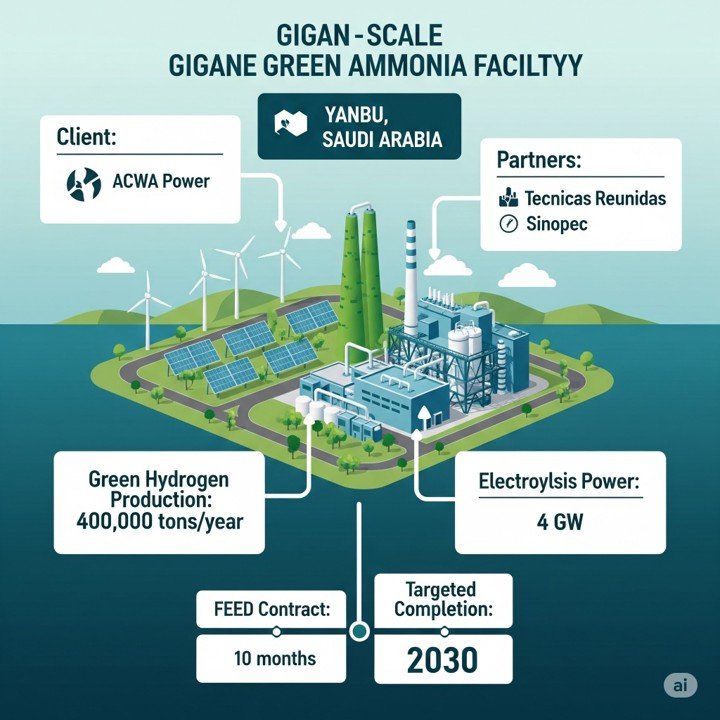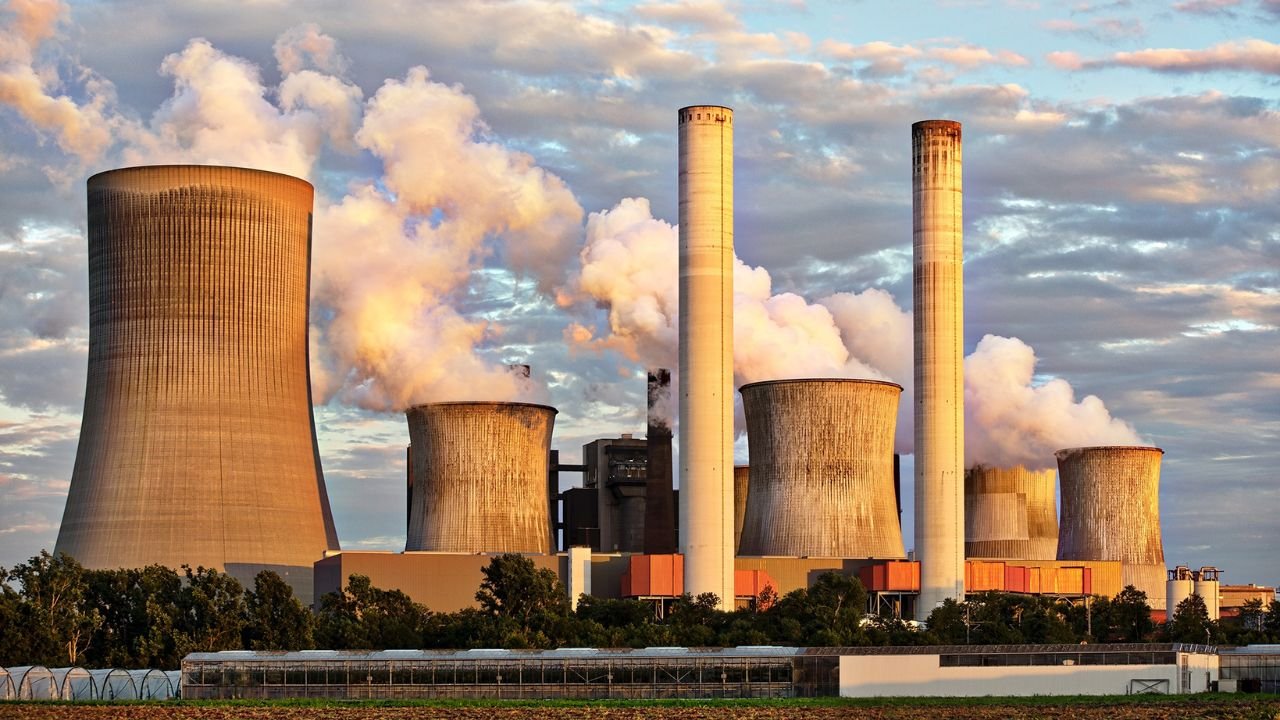Tecnicas Reunidas (TR), in collaboration with Sinopec Guangzhou Engineering, has secured a convertible FEED (Front-End Engineering Design) contract from ACWA Power for the development of a giga-scale green ammonia project in Yanbu, Saudi Arabia.
Table of Contents
Key Highlights of Tecnicas Reunidas FEED Contract of Saudi Arabia:
- Project Location: Yanbu, Saudi Arabia
- Client: ACWA Power
- Partners: Tecnicas Reunidas (Spain) and Sinopec Guangzhou Engineering (China)
- Contract Type: Convertible Front-End Engineering Design (FEED)
- Green Hydrogen Production Capacity: 400,000 tons/year
- Electrolysis Power: 4 GW
- Target Completion: By 2030
- Contract Duration: 10 months
- Future Scope: EPC proposal post-FEED
The ambitious facility will produce 400,000 tons per year of green hydrogen powered by 4 GW of electrolysis, which will then be converted into green ammonia using multiple ammonia synthesis loops.

The project includes comprehensive balance of plant systems, utilities, seawater desalination, and a dedicated export terminal to support international trade.
🔹 Note: The renewable energy generation (solar and wind) that will power the electrolysers is not part of this FEED contract scope, though it remains a critical component of the overall project.
This contract will be executed over a 10-month period, after which TR and its partner are expected to submit an EPC (Engineering, Procurement, and Construction) proposal for the full-scale execution of the facility. Once awarded, this multibillion-dollar infrastructure is targeted for commercial operation by 2030.
Tecnicas Reunidas has already been engaged in pre-FEED activities for this project, ensuring continuity in design and execution.
The successful delivery of this FEED is expected to serve as a gateway for TR to lead one of the world’s largest green hydrogen-to-ammonia projects, aligning with Saudi Arabia’s Vision 2030 and the global shift towards carbon-free fuels.
Also Read:
- CTCI & IHI Win NT$26.6 Billion EPC Contract for LNG Cryogenic Tanks
- CC7 & Hyphen Sign EPC Contract for World’s Largest Green Ammonia Project in Namibia
- Fluor-JGC JV Wins FEED Contract for LNG Canada Phase 2 Expansion

I am a Professional Civil & Structural Engineer having more than 4 years of experience in Engineering, Procurement and Construction industry. Here i sharing the latest updates of EPC Projects and Construction News.

